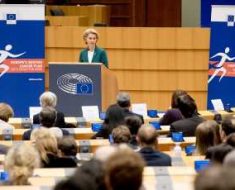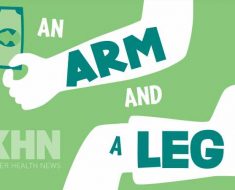Editor’s note: Find the latest COVID-19 news and guidance in Medscape’s Coronavirus Resource Center.
This article was originally published in Portuguese on Medscape.
Earlier this year, the Brazilian Society of Cardiology (SBC) released a position statement regarding evidence gathered on the cardiovascular safety of vaccines against COVID-19. Two cardiovascular adverse events were considered: vaccine-induced immune thrombotic thrombocytopenia (VITT), and myocarditis. The first part of the document, entitled “Position Statement on Cardiovascular Safety of Vaccines Against COVID-19 – 2022,” highlights specific considerations and recommendations on COVID-19 vaccination for individuals with a previous history of venous thromboembolism (VTE) or who have a predisposition to VTE. The second part of the document considers those at risk of myocarditis.
The two rare adverse effects were identified during phase 4, or postmarketing, surveillance. This stage is crucial for evaluating the occurrence of rare adverse events for which causal relationships with vaccines can only be established after the vaccines have been administered to a large number of people.
In February 2021, VITT, a postthrombotic syndrome, was described in some vaccinated individuals. Two adenovirus-vectored vaccines have been implicated in the cause of VITT: ChAdOx1S nCoV-19 (Oxford/AstraZeneca and Serum Institute of India) and Ad26.COV2.S (Janssen; Johnson & Johnson). It should be noted that the real incidence of VITT is still unknown, and evidence has suggested that it is a rare complication.
In January 2022, almost a year later, a report from the Vaccine Adverse Event Reporting System identified 54 cases of thrombosis among more than 14 million Ad26.COV2.S recipients, an incidence of 3.8 cases per million (approximately 1 in 263,000). In the United States, the risk of VITT after Ad26.COV2.S vaccination was estimated at 3.8 cases per million doses in the general population and between nine and 10.6 cases per million doses for women aged between 30 and 49. According to the authors of the position statement, although cerebral venous thrombosis is the most commonly described clinical presentation, thrombocytopenia alone may also occur.
The prognosis of VITT depends on the site, extension, and resulting complication of thrombosis and on the time of diagnosis. In the United States, VITT-related mortality was 0.57 deaths per million doses of Ad26.COV2.S in the general population and 1.8 – 1.9 deaths per million doses among women aged between 30 and 49. Comparatively, the overall mortality rate of COVID-19 is 1% – 2%.
Thrombosis affects 8% of all patients hospitalized for COVID-19 and up to 23% of intensive care unit (ICU) patients. In addition, there is evidence that the incidence of cerebral venous thrombosis among patients hospitalized for COVID-19 was 207 per million cases, much higher than the incidence of vaccine-induced thrombosis (0.9 – 3.8 per million cases).
The authors conclude that there is a consensus that the benefits of vaccination surpass the potential risks of side effects of the vaccine, such as VITT. The scientific committee also makes the following four specific recommendations to cardiologists:
-
Previous history of VTE or predisposition to VTE are not contraindications for COVID-19 vaccination, regardless of the type of vaccine. No study has shown an increased risk of VITT or other thrombotic complications after vaccination in these individuals.
-
Individuals who received the first dose of ChAdOx1 nCoV-19 and did not develop VITT should complete the vaccination schedule of two doses. There is no evidence that the second dose (or even the booster) increases the risk of thrombotic complications. A review of the AstraZeneca safety database in Europe and the United Kingdom showed an incidence of 8.1 cases of VITT per million for the first dose and of only 2.3 cases per million for the second dose.
-
Individuals who received an adenovirus-vectored vaccine and developed VITT should not receive a second dose. Transition to an mRNA vaccine schedule is recommended. Furthermore, available evidence does not support performing any clinical, laboratory, or imaging tests in asymptomatic individuals before or after vaccination.
Vaccine-Induced Myocarditis
Following a comprehensive review of published cases, the scientific committee concluded that, given that the clinical course of myocarditis associated with vaccines is generally mild and self-limited, the overall protective effect of COVID-19 vaccines, particularly for the prevention of severe COVID-19, hospitalization, multisystem inflammatory syndrome in children, and death, still outweighs the risk of vaccine-induced myocarditis.
According to the statement, for almost three decades (from 1990 to 2018), only 0.1% of more than 620 thousand reports of post-vaccine adverse events were attributed to myopericarditis in the United States. Its incidence has been more commonly reported in smallpox, influenza, and hepatitis B vaccines.
In July 2021, the Centers for Disease Control and Prevention reported a possible association between mRNA vaccines against SARS-CoV-2 and myocarditis and pericarditis. The two mRNA vaccines that have been associated with myocarditis are BNT162b2, from Pfizer/BioNTech, and mRNA-1273, from Moderna. After initial reports of an estimated 66.7 cases of myopericarditis per million doses in males aged between 12 and 17 following the second dose, greater attention has been paid to surveillance of this adverse event.
According to the authors, the most recent population-based studies identified 54 cases that met the criteria for myocarditis among more than 2.5 million vaccinated individuals who were monitored by a health organization in Israel (Witberg et al). Among the patients with myocarditis, 37 (69%) were diagnosed between 3 and 5 days after the second vaccine dose.
The estimated incidence of myocarditis (measured within 42 days after the first dose of the vaccine) was 2.13 cases per 100,000 individuals. The highest incidence of myocarditis was reported in male patients aged between 16 and 29 (10.7 cases per 100,000 individuals). Most cases of myocarditis were described as mild (76%) or as intermediate (22%); one case was associated with death from cardiogenic shock. Patients who had left ventricular dysfunction during admission (29%) had normal ventricular function after a median follow-up of 83 days.
Another study reported an incidence rate of 0.35 cases per 100,000 within 21 days after the first dose and 2.10 cases per 100,000 individuals after the second dose (Mevorach et al). The ratio for the comparison of the incidence of myocarditis between vaccinated and unvaccinated individuals after the second dose was 2.4 (95% CI, 1.1 – 5.0). Most (95%) of these cases were self-restricted and had a benign course; however, one death was reported. The same author estimated that the risk of myocarditis among male adolescents was 0.56 cases per 100,000 after the first dose and 8.09 cases per 100,000 after the second dose; the risk estimates among female adolescents of the same age were 0 cases per 100,000 after the first dose and 0.69 cases per 100,000 after the second dose.
Medical organizations have identified at least one variable that has not been included in several analyses, owing to the peculiarities of each study. That is the preexistence of myocarditis, be it for COVID-19 or resulting from other causes.
To reach this conclusion, the expert committee evaluated studies performed in Denmark, Hong Kong, the United Kingdom, and the United States.
Together, the available evidence suggests that the risk of acute myocarditis associated with COVID-19 vaccination is real but has a very low incidence. However, one exception is younger males, mainly adolescents, among whom the risk of vaccine-associated myocarditis exceeds that of myocarditis related to COVID-19 for patients in the same age range.
“Even so, as compared with mortality rates of SARS-CoV2 infection (0.1 – 1.0 per 100,000 individuals aged between 12 and 29), and with the risk of hospitalization, the overall benefits of vaccination outweigh the related risk of myocarditis,” the experts state.
It is important to highlight that individuals infected with SARS-CoV-2 are at an increased risk of cardiovascular diseases other than those recognized as vaccination adverse effects (thrombosis and myocarditis or myopericarditis), such as myocardial infarction, stroke, arrhythmias, atrial fibrillation, heart failure, pulmonary embolism, ischemic heart disease, and angina, among others.
According to the authors, the benefits of COVID-19 vaccination outweigh the risks of myocarditis after vaccination in all populations to whom vaccination has been recommended. Per million males aged between 12 and 29 who received the second dose of mRNA COVID-19 vaccine, 11,000 COVID-19 cases, 560 hospitalizations, 138 ICU admissions, and six deaths due to COVID-19 could be prevented, compared with 39 – 47 expected myocarditis cases in this population.
Also, evidence suggests that the BNT162b2 (Pfizer/BioNTech) vaccine shows an efficacy of 91% against multisystem inflammatory syndrome in adolescents aged between 12 and 18 and prevents progression to more severe cases.
The authors advise that “myocarditis or myopericarditis should be suspected in patients vaccinated with BNT162b2 (Pfizer/BioNTech) or mRNA1273 (Moderna) who present symptoms of chest pain or discomfort (predominantly), dyspnea or tachypnea, fatigue, palpitations, syncope, lack of appetite, and lethargy, and for whom results of electrocardiogram, echocardiography, troponin assays, and nuclear magnetic resonance exclude other suspected causes.”
Ongoing Work
The SBC position statement was written by a work group convened, upon the decision of its Administrative Council, for monitoring studies and developing recommendations for Brazilian cardiologists. “Since the beginning, COVID-19 has proven to be not only an infectious respiratory disease, but also a systemic disease that affects the heart. We have seen patients with cardiovascular comorbidities progressing poorly; the direct involvement of the virus on the heart, resulting in myocarditis and thrombotic phenomena; and, more recently, we have seen the issue regarding the cardiovascular safety of vaccines,” SBC chairperson João Fernando Monteiro Ferreira, MD, explained to Medscape. “We needed to advise our cardiologists to improve safety for patients and the wider community,” Ferreira continued.
The initiative came at the right time. “The decision to try to reduce misinformation by creating a work group dedicated to continuously gathering information on vaccination and cardiovascular risk was the right one. There is a significant need for real information from trusted sources,” said Bruno Valdigem, MD, PhD, cardiologist and one of the authors of the position statement, who is also Medscape’s advisor in Portuguese.
The authors will continue to periodically review new articles and will continue to provide new information to cardiologists as soon as it comes to light. “To date, we have, crucially, already been published in a number of high-quality, highly influential journals, which may provide some level of evidence to be used as the basis for developing practices,” concluded Valdigem.
For more news, follow Medscape on Facebook, Twitter, Instagram, and YouTube.
Source: Read Full Article





